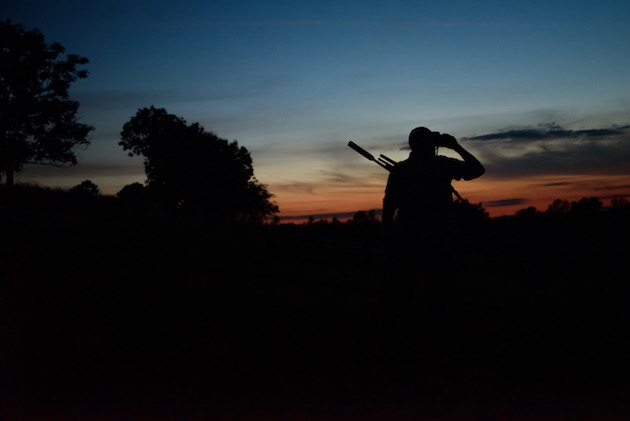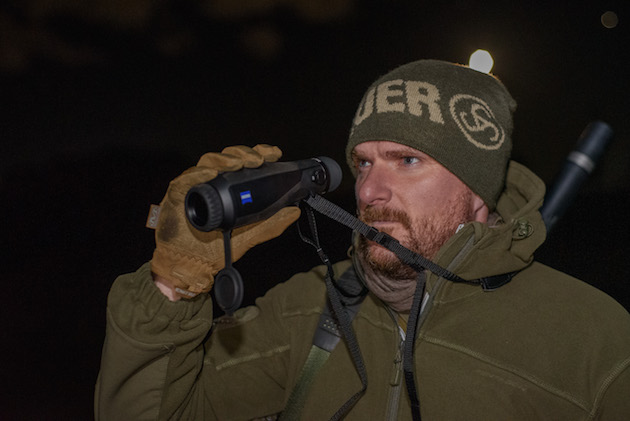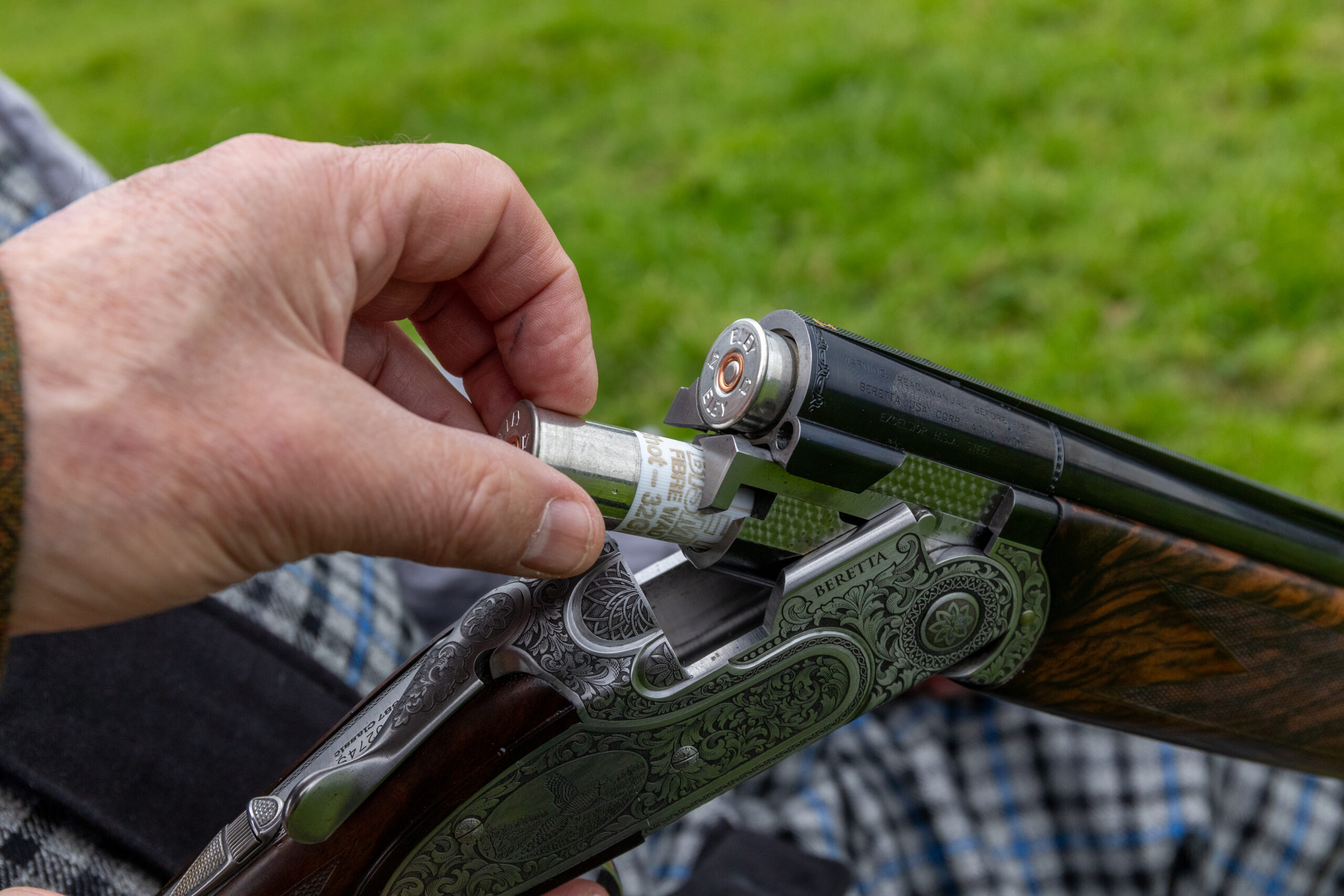How to use thermal imagers in different conditions
Chris Parkin offers some useful advice on how to use thermal imaging equipment in different temperatures and weather

Clear dry air improves all aspects of thermal imaging
Thermal imaging in cold weather
Starting with atmospheric conditions, the colder the environment is relative to animal body temperature will always reveal more. In the winter months with less sunlight, stationary objects like rocks and boundary fences accumulate less residual energy but as sensor capability improves, more natural texture in the landscape is discernible and this is where more money spent on the unit will justify greater cost. Most thermal imaging equipment offers the capability of independent screen brightness control. On darker nights versus daytime use, it is generally beneficial to use the lowest level of illumination possible to retain the greatest amount of natural night vision.

Premium thermal imaging capability will often see through daylight
Personalisation
Adjustable contrast will electronically graduate the colouration of hot to colder sources within the view. Balancing this in any of the available colour palettes is personal taste. Often a couple of favoured levels that you will setup are gained from experience of alternate light/weather conditions.
I find increasing contrast in daylight helpful although at night, I minimise it allowing the wider temperature range itself to do the work. Try to avoid having too much of the field of view above the skyline as this affects the screen’s automated brightness metering, dimming to favour the colder sky which leaves the ground below rather gloomy without detail.

Zooming is is not always significantly beneficial
Large animals close in can show incredible texture and detail thermally but these encounters are not always real hunting opportunities and in real conditions at range, there is a clear difference between footage filmed for video use, compared to actual hunting reality where realistic footage became a coincidental by-product, rather than intentional setup.
One instance where I would recommend deliberate filming is for training purposes, it gives the opportunity to review encounters and look for clues within footage without the stresses and compressed timeframe of the hunt. This is especially good when looking for key details to differentiate quarry, building a mental library for your next encounter giving faster identification just like a colour photo of daytime quarry species.

Highlighted white heat in rich greyscale background
The weather
Rain and more so atmospheric moisture, have a significantly detrimental impact on image quality yet occasionally in fog, demonstrates thermal’s capability to work where human eyes are nearly useless. I have tested premium 12-micron sensors if daytime fog with quarry visible beyond 100 metres when the human eye was restricted to just few paces away. Weaker 17-micron units tested alongside showed immediate benefits to smaller 12-micron pixels in the premium sensor, more of them also improving resolution on a unit with sensitivity in the ~35-40mK region, versus lesser 50mK options. This figure identifies the ability of the sensor to differentiate between temperatures to resolve the incoming data. Cheaper units are still worthwhile and excellent value in clearer conditions, but don’t offer this capability in poor atmospherics so it’s fair to report that money invested at the high end is worthwhile and if you live in regularly foggy areas, almost mandatory.
Hunting in winter moonlight used to be a bit worrisome, thinking we stood out vividly to animals with better night vision than we have, but those clear nights can benefit thermal detection range and redress the balance a little in our favour as we become a newly empowered species to hunt electronically in the darkness. The `old rules` don’t necessarily apply, yet it is crucial to use thermal in addition to fieldcraft, not as a replacement, scent and sounds still carry on the wind’s direction so don’t get too engrossed in a dark world you think only you are master of.
Tracking shot quarry laid in long grass is made easier with thermal imaging
White or Black= Hot?
Daylight use, especially in summer, offers less difference between body temperature of animals and their warmer environment, although less insulation from summer versus winter coats returns some favour your way, and you generally won’t suffer entire foggy hunts. Rising dew boiling off the morning grass can show brief spells of interruption as the mist hangs but these natural factors are ones we have always had to work around, little can beat them entirely.
The less complicated the landscape, the easier it is to detect and differentiate any object thermally just like daylight optics, yet broad dark areas with immediate dots of white heat are fast to pick up. White=Hot is my preference for this reason although the opposing Black=Hot can be gentler on the eye in terms of screen brightness, often showing better texture to the natural landscape.
20 things to know about the new ZEISS DTI 3/35 monocular
Why the ZEISS DTI 3/35 monocular is a game changer Excellent optics deliver reliable identification even in darkness Device is easy…
Why thermal imaging has become one of the greatest shooting aids – and the quarry species you should use it for
Lamping was the early form of getting a clearer view on the quarry. But today’s shooters have much more accurate…
I’m not personally a huge fan of the brighter colour palettes except in circumstances where the additional rainbow variation can helpfully differentiate detail. Heavier manes on Red Stags for example shield body heat. Pinpricks of white heat can help locate fallen quarry, especially in longer cold foliage. Hot spots of blood will stand out well in colder conditions and again, this is my preferred colour option for immediate contrast in woodland where the minimal white flashes between trees will draw attention that would otherwise remain obscured against darker, `colder` foliage. These are conditions in which I find black=hot palates to be avoided with little greyscale contrast. In full view over shorter fields, the opposite is true where the deeper greyscale without flashes of white offers smooth fluid motion with less eye strain. It is well worth activating electronic `hot tracker` functions to immediately draw your attention to new hot objects in the field of view and it’s great to see laser rangefinders becoming common to aid confident night shooting.

Thermal gradients close up
Range realism
First encounters of thermal imaging capability seen by many potential buyers is on-board footage recorded by the units themselves while hunting. Depending on the source of this video, it may or may not have been digitally enhanced which can significantly sway your theoretical expectation of image quality so it’s important to be realistic in the real world at your likely range from quarry you need to detect, identify and engage.








